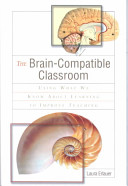How Coaches and Teachers Differ
Traditionally, coaches and teachers operate quite differently when working with groups of children. Coaches tend to teach for success. For example, suppose a coach is teaching the skill of dribbling a basketball. He or she first shows the children exactly what good, proper dribbling looks like. The demonstration may then be expanded by showing some exceptional, fancy-footwork-type dribbling that the kids may aspire to learn with extra effort. The coach shows common errors made when dribbling the basketball and clear-cut methods to correct bad dribbling habits. Coaches tend to continue modeling and giving pointers to the kids until the skill is learned.
The students are encouraged to help each other practice and learn the skill. Finally, when the dribbling is mastered, the coach displays pride in the students with words of praise and high-fives, and they may all celebrate together with a group hug and cheer.
Teachers, on the other hand, traditionally teach curriculum in a different fashion. The skill, such as writing a descriptive paragraph, is explained once. The teacher may or may not ever actually model a good descriptive paragraph. The advanced student, who may know the skill already, writes an exceptional paragraph and receives a high grade. This student's work is not shown as a model. In fact, if this student does show his or her work to others or tries to help classmates, it might be considered cheating. Then later, after not much practice or guidance from the teacher, the student is tested to determine if the skill has been mastered. If the skill has not been mastered, typically there is no continued practice or refinement, just a low score in the teacher's grade book. If the skill has been mastered, there are no high-fives and fanfare, just a high score quietly recorded in the grade book.
Thankfully, recent teaching practices have changed from the pop-quiz mentality of trying to catch students not learning concepts to a coaching-type attitude of being upfront in telling students just what is expected and helping them reach that goal. Using rubrics is one way a teacher can ensure that students know the expectations of an assignment. A rubric clearly delineates what work earns what score by modeling or explaining requirements. When a student knows exactly what work earns an A, what work earns a B, and so on, ownership in the learning has been given to that student. Additional benefits of using rubrics include assessing students' work in an objective manner and communicating expectations and scoring of assignments to parents; it is easy to explain to a parent why his or her child earned that D when the work can be directly compared to the expectations and models provided on the rubric.
Notes:
Coaches encourage learning through collaboration and practice, while teachers make the mistake of focusing on testable results and 'fairness.' Coaching seems like the preferable strategy.
Folksonomies: teaching coaching
Taxonomies:
/family and parenting/children (0.457730)
/sports/basketball (0.428656)
/finance/personal finance/lending/student loans (0.387547)
Keywords:
proper dribbling looks (0.981530 (positive:0.508996)), skill (0.947809 (positive:0.448762)), bad dribbling habits (0.946536 (negative:-0.845649)), descriptive paragraph (0.782074 (neutral:0.000000)), good descriptive paragraph (0.768036 (neutral:0.000000)), fancy-footwork-type dribbling (0.741896 (neutral:0.000000)), recent teaching practices (0.731454 (positive:0.670760)), grade book (0.720206 (negative:-0.204796)), preferable strategy (0.624751 (negative:-0.288527)), testable results (0.613481 (neutral:0.000000)), student (0.596929 (positive:0.105780)), students (0.595408 (positive:0.722890)), coaches (0.590349 (positive:0.442631)), clear-cut methods (0.586424 (negative:-0.845649)), group hug (0.573348 (positive:0.580682)), common errors (0.567392 (negative:-0.845649)), exceptional paragraph (0.566114 (positive:0.558227)), extra effort (0.564131 (neutral:0.000000)), different fashion (0.562124 (positive:0.366069)), pop-quiz mentality (0.553765 (positive:0.670760)), advanced student (0.548582 (positive:0.481844)), exactly what work (0.546902 (positive:0.445842)), Additional benefits (0.546322 (positive:0.713332)), coaching-type attitude (0.540991 (positive:0.670760)), objective manner (0.540454 (positive:0.627620)), continued practice (0.536118 (negative:-0.292330)), low score (0.535009 (negative:-0.550969)), teachers (0.534353 (positive:0.450499)), high grade (0.532888 (positive:0.558227)), high score (0.522765 (positive:0.346173))
Entities:
basketball:Sport (0.732157 (neutral:0.000000))
Concepts:
Education (0.953973): dbpedia | freebase | opencyc
Learning (0.644890): dbpedia | freebase | opencyc
Teacher (0.602797): dbpedia | freebase | opencyc
School (0.419773): dbpedia | freebase | opencyc
Coaching (0.384038): dbpedia | freebase | opencyc
History of education (0.372917): dbpedia | freebase
Student (0.364852): dbpedia | freebase | opencyc
Skill (0.362495): dbpedia | freebase





